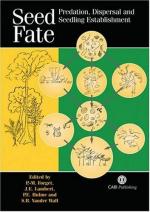|
This section contains 279 words (approx. 1 page at 300 words per page) |
Predation refers to the act of a predator killing its prey. All predators are heterotrophs, meaning they must consume the biomass of other organisms to fuel their own growth and reproduction. Predation may be important in regulating the size of populations of prey species, and in culling weak or diseased animals. The most common use of the term "predation" is to describe the act by which carnivorous animals catch, kill, and eat other animals. Sometimes, however, the term is also used in reference to herbivory, in which animals seek out and consume a "prey" of plant biomass, sometimes killing the plant in the process. In many cases only specific plant tissues or organs are consumed by the herbivore, and ecologists may refer to such feeding as, for example, seed predation or leaf predation.
There is a great diversity of carnivorous animals, ranging in size from tiny arthropods such as soil mites that eat other mites and springtails, to large mammalian carnivores such as leopards and polar bears. With lions, wolves, orcas, and some other large species, predatory activity often occurs as a cohesive, group effort.
Most predation is undertaken by animals. However, a few plants and fungi are also predators. For example, pitcher plants and sundews are adapted to attracting, trapping, and digesting small arthropods as sources of nutrients. This unusual habit represents predation by these so-called carnivorous plants. A few types of fungi are also predatory, trapping tiny nematodes using anatomical devices such as sticky knobs or branches, or constrictive rings that close when their prey tries to move through. Once a nematode is caught, fungal hyphae surround and penetrate their victim, and absorb its nutrients.
|
This section contains 279 words (approx. 1 page at 300 words per page) |


